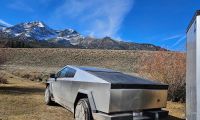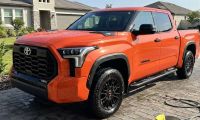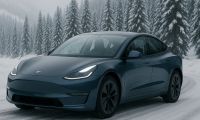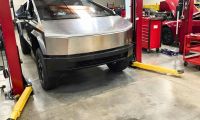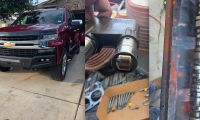Tesla recently emailed your author an advertisement for the Tesla Model Y. The advert was titled “Snow Days Are Better With Tesla.” The advertisement went on to detail four features that make the Tesla Model Y good for snowy weather. Interestingly, Tesla left a lot of its winter-weather features off of its own list. Let’s do a deep dive into the question of whether a Tesla Model Y is a good vehicle for bad weather.

What Is A “Good In Snow” Vehicle?
The term “good in snow” is entirely subjective. What a person living in the Great North Woods of New Hampshire considers “good in snow” may be entirely different from what a person living in Norway, Colorado, or California thinks constitutes a car that is good in snow. In our analysis here, we will not discount the opinions and buying habits of Tesla owners. The truth is, only what a Tesla owner thinks matters. However, there are objective ways to rank a vehicle on the “Good in snow” scale.
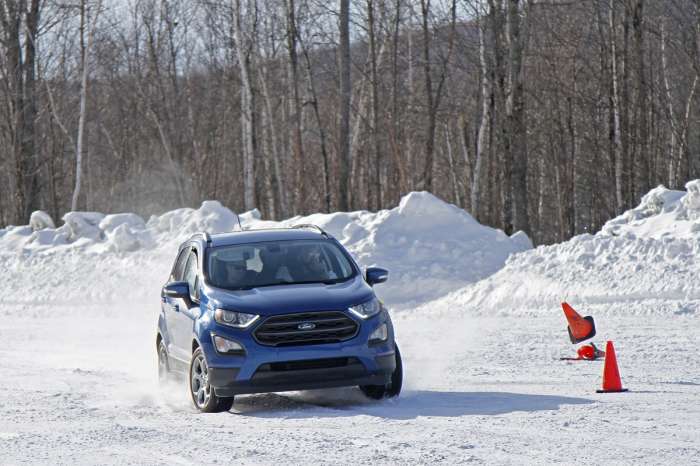
Who am I to say what is and what is not a good car for snow? I’m a professional vehicle tester who is a graduate of three performance driving schools, including the Team O’Neil Rally School’s Winter Safety course. I’ve driven front-wheel drive, rear-wheel drive, all-wheel drive, and four-wheel drive vehicles across an ice-covered winter skills course at high speed with instructors to learn how they differ and how to make the most of their abilities. In addition, I’ve participated in a dozen New England Motor Press Winter Testing events, along with some manufacturer-sponsored ice and snow course events. My vehicle testing trends towards electric vehicles these days, and as I write this story, I have a Hyundai Kona encrusted in an inch of ice accretion thawing out in my driveway.
Related Story: Here’s How Pro Testers Know If A Vehicle Is Good In Winter Ice and Snow
Now if you think my analysis will be based solely on how a vehicle handles at the limit on snow and ice, guess again. Tesla’s claim is that snow days are better with a Tesla. A lot of things go into making a car good on such days, and many have nothing to do with the vehicle’s handling and traction. Let’s get started by imagining the morning you wake up to your vehicle and your hilly driveway covered in snow, under which is ice.
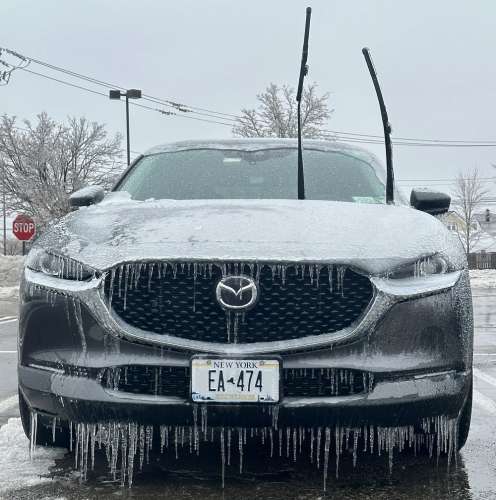
Tesla Model Y Wipers Can’t Go Up
In New England, savvy drivers forced to park outside will often lift up their wiper blades so they don't freeze to the glass. It helps to make your de-icing procedure quicker, and it helps to keep the wiper blades safe. Tesla blades don’t lift up. They can enter service mode and will move up and away a bit from the rest area they normally sit in. Here is a video on how it works.
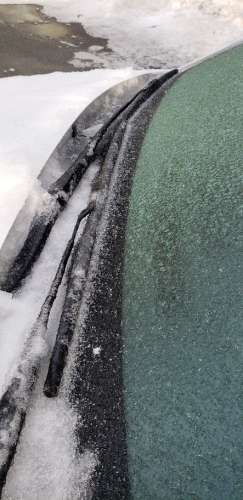
Tesla Model Y - No Heated Wipers, Headlight Washers, or Fully Heated Windshield
Some premium vehicles we test have a windshield that is entirely heated. Not just the lower section to warm the wipers, bey the entire glass area. Others have the ability to wash their headlights. In snowy weather, LED headlights are not warm, and they can become ice-encrusted. Being able to blast them with washer fluid is great. Some vehicles heat up the washer fluid nozzles. Jeep even offers a spray washer for its forward-looking cameras. Tesla offers none of these technologies.
Tesla Model Y - Defrosting Your Car
Before you can head out and test your skills on a snow and ice-covered roadway, you need to get the snow and ice off of your car. Tesla has recently added a new feature that we think gives the brand a head start. Some Tesla vehicles have been built with heating elements at the base of the windshield that help to defrost your wiper blades and also help to keep them free from ice as you drive. Every crossover SUV in our household has this feature, including our Subaru, Mazda, and Toyota. I would not buy a daily driver without this feature. So we will say Teslas equipped with this feature will have a leg up on models without it.
Tesla Model Y - Cabin Preconditioning
Remote start has been a thing with ICE cars forever. Most affordable models offer remote starting via a keyfob or app. EVs can even precondition their cabins if they are plugged in to help save some range. Tesla can do this too. Two of Tesla’s four “advantages” it lists as making its vehicles good in snow are “Scheduled Departure” and “Remote Defrosting.” It is hard to say Tesla is special here, given that almost every modern electric vehicle has cabin preconditioning.
Tesla Model Y Creature Comforts - Heated Seats and Steering Wheel
Tesla offers heated steering wheels and heated seats. These are great features that every winter vehicle should have. Tesla earns a thumbs-up for including them. Tesla lists as one of its “features” a heat pump. Heat pumps are efficient ways to make heat for the cabin. Many EV buyers seek out models with heat pumps. We will give Tesla credit for offering a feature winter drivers want. Is a heat pump more effective than resistance heating or using engine waste heating in an ICE car? Nope. So, although it is a feature in a sense, it does not really make the car better on a snow day in terms of keeping you warm.
Tesla Modle Y - Driving In Snow and On Ice
Any vehicle can be driven on a snowy or icy surface. However, many have better performance than others. The biggest factors are tires first and all-wheel drive second. AWD does not help you much when turning or steering in snow. It doesn't help you stop. Tires do help - a lot. Tesla doesn't provide any of its models with severe snow-duty rated tires as standard equipment. You can change them out, and we would certainly suggest that you do so if you plan to drive in the snow. However, many things that make driving in snow easier or more practical can't be purchased after you buy the vehicle. Our sections below help to explain that.
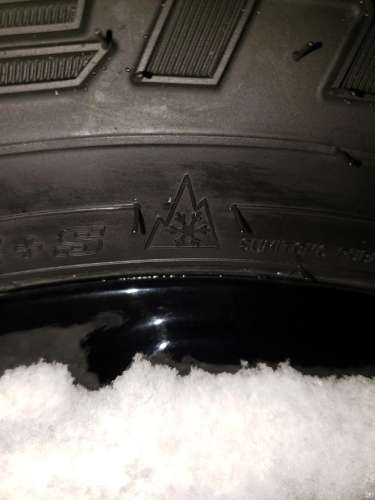
Tesla Model Y Poor Tires For Snow and Ice
The single most important factor with regard to driving on ice and snow is tires. Many automakers, including Ford, Subaru, Toyota, and Mazda offer crossovers the size of the Model Y that come with tires tested and rated for severe snow duty. They have a three-peak mountain snowflake symbol on the sidewall indicating this rating. Tires rated for harsh winter duty help you turn and stop better than all-season or performance tires. They also help get you going or help to get you unstuck. Tesla does not offer any trims of the Model Y with tires rated for severe snow duty. You would have to purchase them separately after you buy your Tesla.
Tesla Model Y Poor Ground Clearance and Nose Clearance Design
If you arrive home at night in a blizzard, the chances are your driveway will be plowed-in. The municipal plows will have created a pile of ice and snow at the end of your driveway. You have two choices; Get out and shovel, or drive through and over it. Tesla’s Model Y has just 6.6 inches of ground clearance. That is about 50% less clearance than many vehicles we think of as “Good in snow.”
Tesla’s nose is also made of delicate plastics and is low to the ground. This is a big disadvantage for those who want to drive up and over-compressed snow and ice. By contrast, many crossovers the size of the Model Y offer rugged plastic lower fascias and/or steel skidplates. Overall, we would say the Model Y is poorly designed as a vehicle that may be asked to drive in deep snow or over areas with compressed snow and ice. It looks great in pictures, but it is impractical in the real world.
Tesla Model Y - Standard All-Wheel Drive
All-wheel drive is the best propulsion system for snow days. It tops four-wheel drive because it is tricky to steer with most 4X4 systems engaged. Tesla’s Model Y Long Range and Performance both come with AWD. This is its single biggest winter driving feature. All Subaru and Mazda crossovers the size of the Model Y also have standard AWD, and Toyota offers multiple systems on its RAV4 and Highlander lines. AWD is great, but is it really that special on crossovers in 2023?
Tesla Model Y Has No Snow Mode But Does Have Slip Start
Snow modes have been around for decades. These modes reduce torque, and the power is distributed more evenly to the four wheels than in normal or sport modes. Tesla’s Model Y does not have a snow mode. By contrast, Subaru’s Forester offers three, and Ford’s Bronco Sport has at least three that we can count, including a locking rear differential.
The Model Y does offer a mode called Slip Start. The video above shows it in action. Fast forward to timestamp 8:11 to see it fail in its mission.
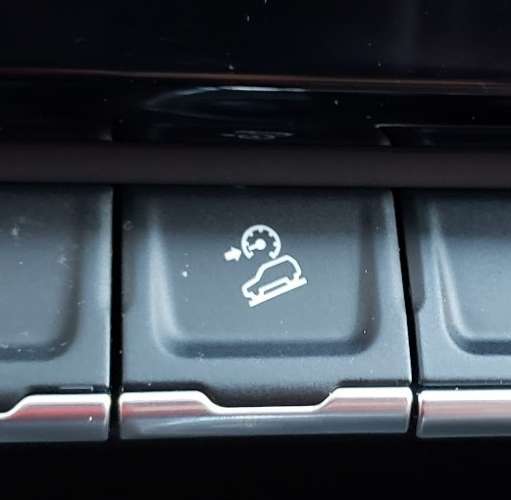
Tesla Model Y No Hill Descent Control
Hill descent control uses both the powertrain and individual brakes to slowly and steadily creep a vehicle down a slippery slope. We’ve used it in many vehicles, including Land Rovers, Lexus Vehicles, Hondas, and Subarus. It works extremely well. If you have a remote cabin used in winter, a feature like this is very handy to keep you out of trouble and to open up more places to go in winter weather. It also works great if you have a steep driveway you return home to after a hard day at work. Tesla doesn't offer hill descent control.
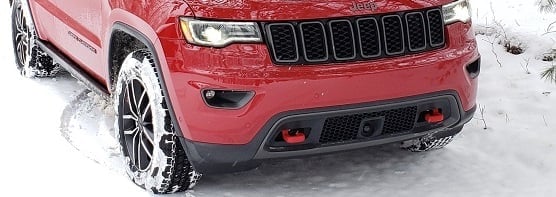
Tesla Model Y Emergency Features Spare Tire and Recovery Points
Every vehicle has emergency towing eyelets that can be used to help recover a stuck vehicle, and the Model Y is no different. However, vehicles that are made for winter adventures have recovery points that are ready to use and easy to access. Tesla’s Model Y doesn’t offer these. Yet, crossover SUVs from Honda, Ford, Jeep, and many other brands do offer them. If you are really going to explore some frozen tundra like the Model Y is depicted doing in the image Tesla used in its advertising, recovery points just make sense.
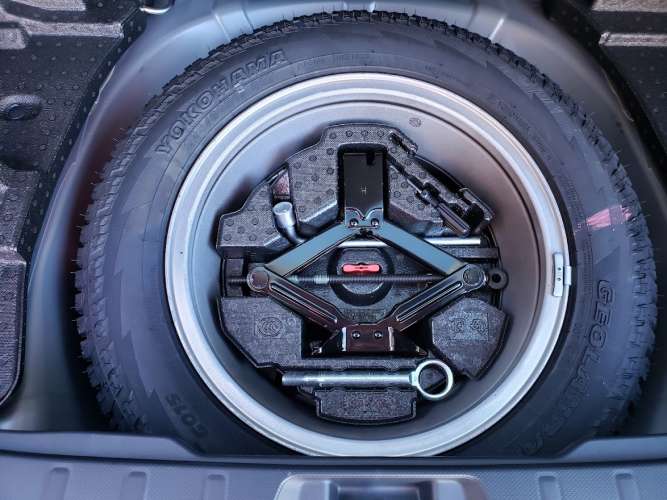
Another sensible feature for winter is a spare tire. During snow storms and in spring when the melt-thaw cycle is at its zenith, roads become chewed up by plows, and monster potholes emerge. While it is snowing, it is impossible to see them, and hard pothole strikes are inevitable. Tear a sidewall in a Tesla, and you are walking. There is no spare tire. Lose a tire in the backcountry when on a ski trip, and you may not even have cell coverage to call for a tow. Many vehicles that are “good in snow” the size of Tesla’s Model Y have a compact spare tire standard. Others, like the Forester, Outback, Bronco Sport, and Honda Pilot offer full-size matching spare tires.
Are Tesla Model Ys Fun In Snow?
Driving any vehicle in the snow can be fun, particularly if you don’t own the vehicle. Powerdrifting in a parking lot is a barrel of laughs until you hit a curb or pothole while sideways. The negatives to snow driving are usually related to commuting in snow. You can be the judge as to whether commuting in snow in a Tesla Model Y is fun or not.
Conclusion - Are Snow Days Better With A Tesla Model Y?
If you were offered a vehicle in which to drive to a ski lodge in a snowstorm, would you choose one with or without severe snow-rated tires? Would you want one with around nine inches of ground clearance or one with 6.6 inches? Would you want a snow mode or two or three to augment and maximize the effectiveness of your AWD system or not? And if you approach your cabin (at night while it is sleeting sideways) and there is a steep downhill section, would you want to have Hill Descent Control, or not? Would you want a vehicle that can clean its headlights and keep its washer nozzles from freezing? Would a fully-heated windshield be something you would prefer? How about the reassurance of a full-size spare tire far from home in a blizzard? Sure, Tesla has AWD, and it has heated seats and a heated steering wheel. Fine for light snow, but let’s not pretend that Tesla has any trim of any model that is really set up to be better in winter weather than any other AWD crossover.
John Goreham is an experienced New England Motor Press Association member and expert vehicle tester. John completed an engineering program with a focus on electric vehicles, followed by two decades of work in high-tech, biopharma, and the automotive supply chain before becoming a news contributor. In addition to his ten years of work at Torque News, John has published thousands of articles and reviews at American news outlets. He is known for offering unfiltered opinions on vehicle topics. You can follow John on Twitter, and TikTok @ToknCars, and view his credentials at Linkedin
Image of Tesla in snow courtesy of Tesla, Inc. Image of Toyota RAV4 in snow by John Goreham. Image of Ford EcoSport on snow course courtesy of Team O'Neil Rally School. Image of Mazda CX-30 courtesy of Ryan G. Image of Kona EV with frozen wipers by John Goreham. Image of three peak mountain snowflake on tire by John Goreham. Image of hill descent control by John Goreham. Image of recovery hooks by John Goreham. Forester Wilderness full size spare image by John Goreham.







